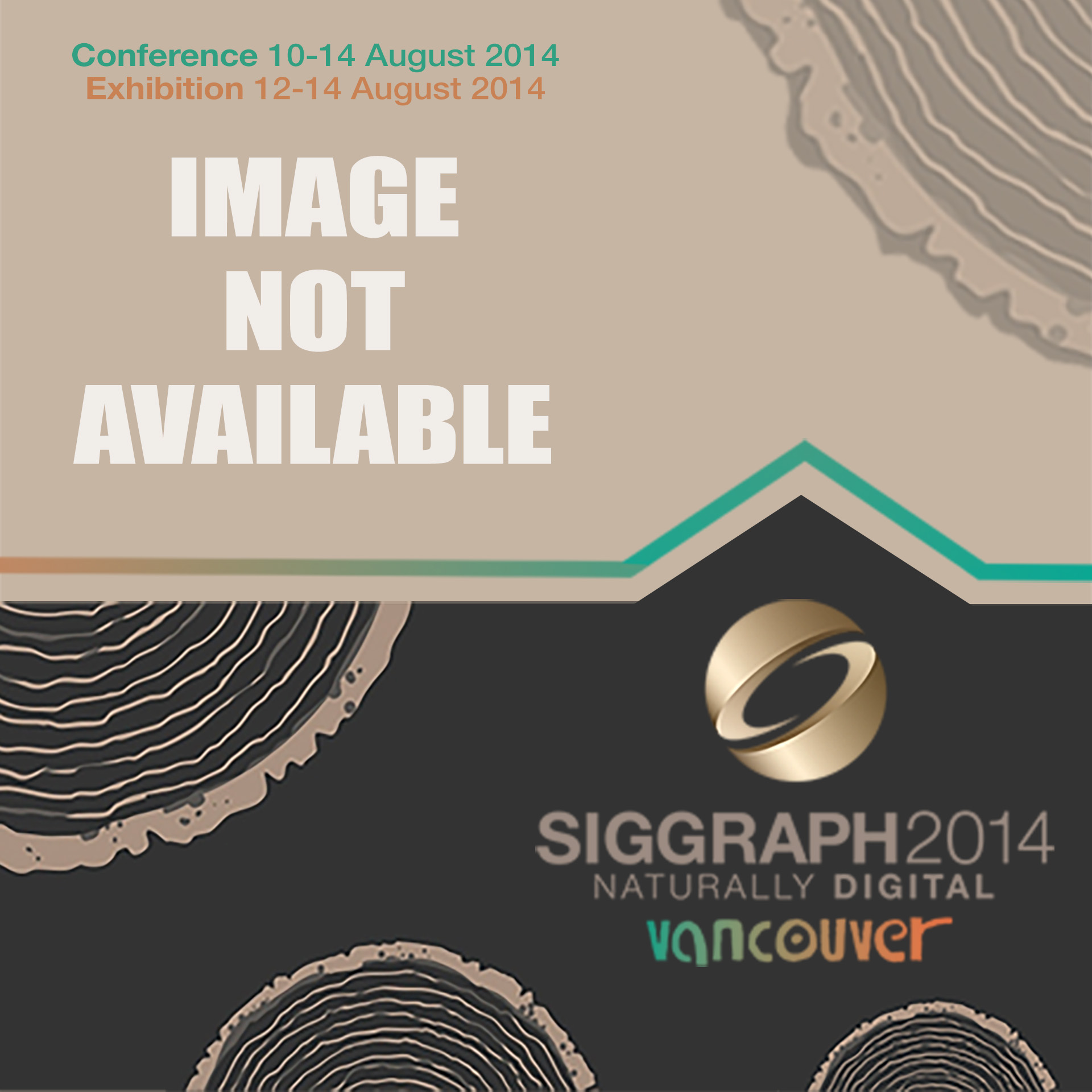“Exploratory font selection using crowdsourced attributes” by O’Donovan, Lībeks, Agarwala and Hertzmann
Conference:
Type(s):
Title:
- Exploratory font selection using crowdsourced attributes
Session/Category Title: Typography & Illustration
Presenter(s)/Author(s):
Moderator(s):
Abstract:
This paper presents interfaces for exploring large collections of fonts for design tasks. Existing interfaces typically list fonts in a long, alphabetically-sorted menu that can be challenging and frustrating to explore. We instead propose three interfaces for font selection. First, we organize fonts using high-level descriptive attributes, such as “dramatic” or “legible.” Second, we organize fonts in a tree-based hierarchical menu based on perceptual similarity. Third, we display fonts that are most similar to a user’s currently-selected font. These tools are complementary; a user may search for “graceful” fonts, select a reasonable one, and then refine the results from a list of fonts similar to the selection. To enable these tools, we use crowdsourcing to gather font attribute data, and then train models to predict attribute values for new fonts. We use attributes to help learn a font similarity metric using crowdsourced comparisons. We evaluate the interfaces against a conventional list interface and find that our interfaces are preferred to the baseline. Our interfaces also produce better results in two real-world tasks: finding the nearest match to a target font, and font selection for graphic designs.
References:
1. Bradley, R. A., and Terry, M. E. 1952. Rank Analysis of Incomplete Block Designs: I. The Method of Paired Comparisons. Biometrika 39.Google Scholar
2. Chaudhuri, S., Kalogerakis, E., Giguere, S., and Funkhouser, T. 2013. AttribIt: Content Creation with Semantic Attributes. In Proc. UIST. Google ScholarDigital Library
3. Doyle, J. R. 2005. Evaluating the IBM and HP/PANOSE Font Classification Systems. Online Information Review 29, 5.Google ScholarCross Ref
4. Friedman, J. H. 2000. Greedy Function Approximation: A Gradient Boosting Machine. Annals of Statistics 29.Google Scholar
5. Garfield, S. 2011. Just My Type. Profile Books.Google Scholar
6. Huang, S.-S., Shamir, A., Shen, C.-H., Zhang, H., Sheffer, A., Hu, S.-M., and Cohen-Or, D. 2013. Qualitative Organization of Collections of Shapes Via Quartet Analysis. ACM Transactions on Graphics 32, 4. Google ScholarDigital Library
7. Kovashka, A., Parikh, D., and Grauman, K. 2012. Whittle-Search: Image Search with Relative Atribute Feedback. In Proc. CVPR. Google ScholarDigital Library
8. Kulis, B. 2011. Metric Learning: A Survey. In Foundations and Trends in Machine Learning.Google Scholar
9. Kumar, N., Berg, A. C., Belhumeur, P. N., and Nayar, S. K. 2011. Describable Visual Attributes for Face Verification and Image search. In IEEE PAMI. Google ScholarDigital Library
10. Laurentis, M. S. D. 1993. Panose 2.0 White Paper. Tech. rep., Hewlett-Packard Document.Google Scholar
11. Lewis, C., and Walker, P. 1989. Typographic Influences on Reading. British Journal of Psychology 80.Google Scholar
12. Li, Y., and Suen, C. Y. 2010. Typeface Personality Traits and Their Design Characteristics. In Proc. DAS. Google ScholarDigital Library
13. Lloyd, S. P. 1982. Least Squares Quantization in PCM. IEEE Transactions on Information Theory 28, 129–137. Google ScholarDigital Library
14. Mackiewicz, J., and Moeller, R. 2004. Why People Perceive Typefaces to Have Different Personalities. In Proc. IPCC.Google Scholar
15. Marks, J., Andalman, B., Beardsley, P. A., Freeman, W., Gibson, S., Hodgins, J., Kang, T., Mirtich, B., Pfister, H., Ruml, W., Ryall, K., Seims, J., and Shieber, S. 1997. Design Galleries. In Proc. SIGGRAPH. Google ScholarDigital Library
16. Parikh, D., and Grauman, K. 2011. Relative Attributes. In Proc. ICCV. Google ScholarDigital Library
17. Schultz, M., and Joachims, T. 2004. Learning a Distance Metric from Relative Comparisons. In Proc. NIPS.Google Scholar
18. Shaikh, A., Chapparo, B. S., and Fox, D. 2006. Perception of Fonts: Perceived Personality Traits and Uses. Usability News.Google Scholar
19. Shaikh, A. 2007. Psychology of Onscreen Type. PhD thesis, Wichita State University.Google Scholar
20. Solli, M., and Lenz, R. 2007. FyFont: Find-Your-Font in Large Font Databases. In Proc. SCIA, 432–441. Google ScholarDigital Library
21. Srihari, S. 1999. Multifont Classification Using Typographical Attributes. In Proc. ICDAR. Google ScholarDigital Library
22. Talton, J. O., Gibson, D., Yang, L., Hanrahan, P., and Koltun, V. 2009. Exploratory Modeling with Collaborative Design Spaces. ACM Transactions on Graphics 28, 5. Google ScholarDigital Library
23. Tamuz, O., Liu, C., Belongie, S., Shamir, O., and Kalai, A. 2011. Adaptively Learning the Crowd Kernel. In Proc. ICML.Google Scholar
24. Tao, L., Yuan, L., and Sun, J. 2009. Skyfinder: Attribute-based Sky Image Search. ACM Transactions on Graphics 28, 3. Google ScholarDigital Library
25. Tibshirani, R. 1996. Regression Shrinkage and Selection Via the Lasso. Royal. Statist. Soc B 58.Google Scholar
26. Tsukida, K., and Gupta, M. R. 2011. How to Analyze Paired Comparison Data. Tech. rep., University of Washington.Google Scholar
27. van der Maaten, L., and Hinton, G. 2008. Visualizing Data Using t-SNE. Journal of Machine Learning Research 9.Google Scholar
28. Welinder, P., Branson, S., Belongie, S., and Perona, P. 2010. The Multidimensional Wisdom of Crowds. In Proc. NIPS.Google Scholar
29. White, R., Kules, B., Drucker, S., and Schraefel, M. 2006. Supporting Exploratory Search. Commun. ACM 49, 4. Google ScholarDigital Library





